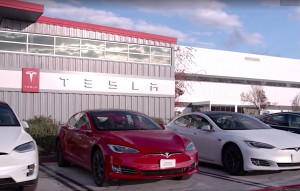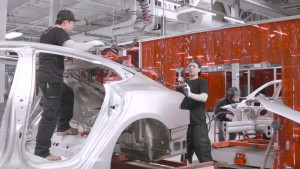Warning that Tesla faces some serious challenges, despite delivering a solid third-quarter profit, Tesla CEO Elon Musk announced plans to cut 7% of the battery-carmaker’s staff in a letter sent to employees on Friday.
All told, that would work out to about 3,150 of the people who work at Tesla’s headquarters in Silicon Valley, plants in Fremont, California, and Reno, Nevada, and other facilities. The move comes just days after Musk outlined plans to cut 10% of the workforce at his SpaceX rocket company.
“I want to make sure that you know all the facts and figures and understand that the road ahead is very difficult,” Musk said in the memo sent to the Tesla workforce, adding that, “While we have made great progress, our products are still too expensive for most people.”
Employment at Tesla has long been risky. Two years ago, the company fired about 1,000 workers at its Fremont assembly line, allegedly for poor performance – though that move is caught up in a legal battle, the National Labor Relations Board siding with critics who believe the firings targeted pro-union workers. Recent reports have also indicated that Musk went on a firing binge during the period of “manufacturing hell” at the Fremont plant as he struggled to get production on track.
(No-shows, but Tesla and Musk still have strong presence at NAIAS. Click Here for the story.)
The latest cuts come as something of a rebound after Tesla hired thousands of workers last year, in part to assist with production in Fremont. That helped the automaker boost output from just a few hundred a week at the beginning of 2018 to more than 6,000 a week as the year ended.
Tesla wound up with sales of 245,000 in 2018, nearly matching its total volume in previous years combined. That made it the best-selling manufacturer in the emerging battery-electric vehicle, or BEV, market, but it still was barely half Musk’s original target of 500,000 vehicles. And some observers have questioned whether demand is accelerating, along with production, as Tesla draws down its original order bank for the Model 3.
Part of the problem is that Tesla has yet to deliver the long-promised base version of that compact sedan which was expected to start at $35,000.
“Starting around May, we will need to deliver at least the mid-range Model 3 variant in all markets, as we need to reach more customers who can afford our vehicles,” Musk wrote to employees.
The sales pressures complicate Tesla’s drive to sustain profitability. It delivered an unexpectedly strong showing during the third quarter of last year, only the third time its balance sheet was in the black since the company went public. Musk is now signaling Tesla will remain profitable for the fourth quarter but warned that the earnings look likely to be weaker than during the July-September period.
(Click Here for details about Tesla’s Musk cutting its referral program to cut costs.)
Investors reacted with concern about the latest news, Tesla shares dropping nearly 8% in pre-market trading.
Complicating the carmaker’s problems, Tesla saw federal tax credits for its buyers cut by half at the start of the new year, to a maximum $3,750 a vehicle, because it crashed a 200,000-unit sales threshold. They will be halved again come July 1 and eliminated entirely at the beginning of 2020. General Motors will be the next to see the incentives start to phase out, starting in April.
The Palo Alto, California-based automaker is hoping to minimize the impact of the cuts by itself slashing $2,000 off the price tag of its products. But that only cuts into its margins.
Further complicating matters for Tesla, the automaker is facing a raft of new competitors. Volkswagen this week announced plans to spend $800 million to expand its factory in Chattanooga, Tennessee, to produce two new battery-electric models. Both will target mainstream segments – and not only the Model 3 sedan but the Model Y SUV Tesla is expected to unveil later this year.
Virtually every major automaker plans to enter the long-range BEV market over the next several years. But Tesla still remains the king-of-the-hill. At a presentation in Detroit on Tuesday, Toyota North America CEO Jim Lentz noted that only one “electrified” model available in the U.S. generates more than 10,000 sales a month, the Model 3.
(Click Here for more about Tesla’s new Gigafactory in Shanghai.)
That said, Tesla remains well short of its original sales goals and is struggling to bring costs down, as the latest job cuts illustrate, to ensure it can remain in the black.


